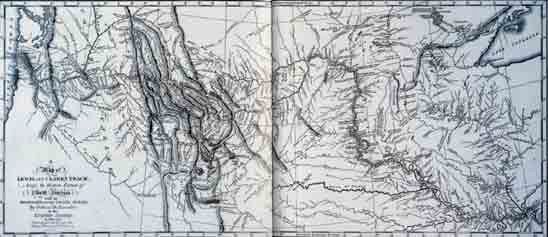
Hunting Near Burnt Hills (4)
With the help of Sergeant Gass he stripped of his clothes and began dressing his wounds, packing the bullet holes with ointment and cotton to staunch the bleeding. As his breeches were peeled away, the telltale ball that caused the ruckus shook loose from where it had lodged in the leather, and fell to the ground. It was of the type used by a short rifle, the very weapon that Cruzatte had carried into the forest that morning. Lewis stayed his tongue, considered the ball for a moment, and pressed it into the dirt with his thumb. It would not bear witness to this lie. He smoothed the ground over with the palm of his hand.
In the meantime, the men, having already skinned and dressed out the kill, began milling around, uneasy and spooked by the thought of a possible Indian attack. The Blackfeet had already proven to be less than friendly. Lewis sized up the heightened state of nerves and, realizing that he was not, without a great deal of pain, going to be able to make his latitudinal observation, abandoned the idea altogether and ordered the men back onto the river. They would forego the journal entry and put some distance between themselves and that spot, making camp as far downstream as the afternoon hours and the setting sun would permit. On the very next day they made their rendezvous with Captain Clark and his detachment. With Lewis lying flat on his stomach in the belly of a canoe, the reassembled Corps of Discovery proceeded down the Missouri River, arriving at the Mandan villages three days later. It was August 15, 1806 and the Lewis & Clark Expedition officially disbanded. The men would make their own way to St. Louis.
The End